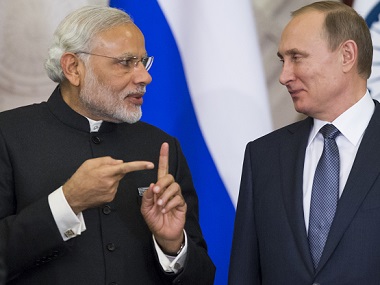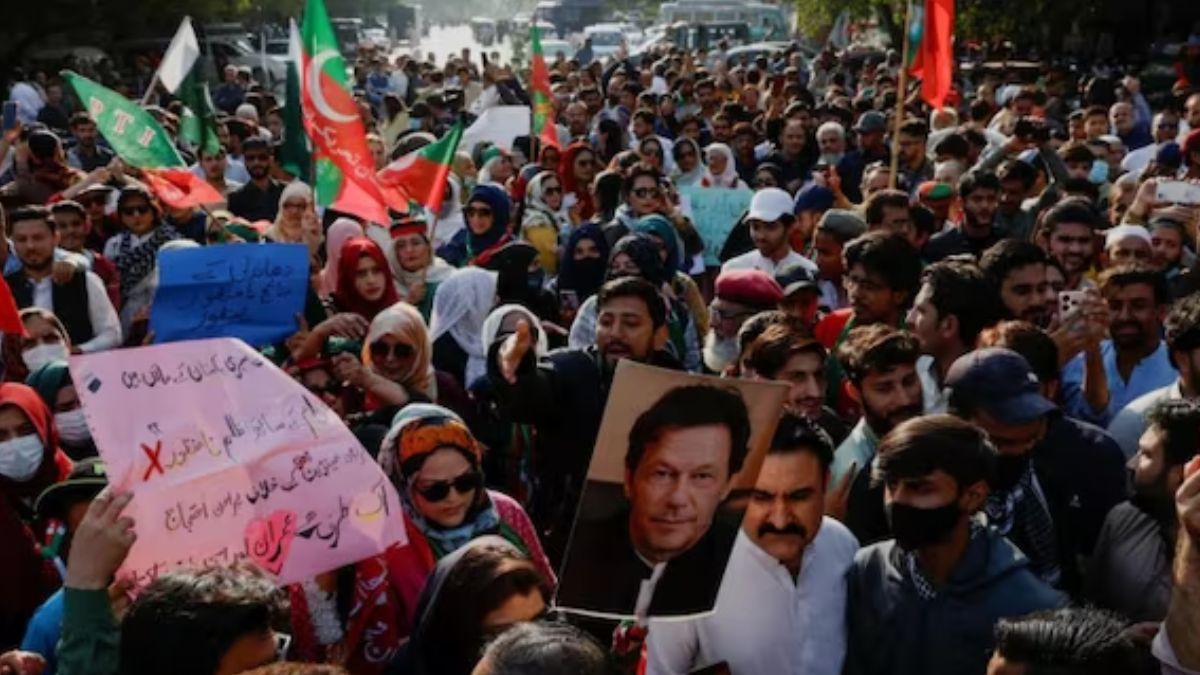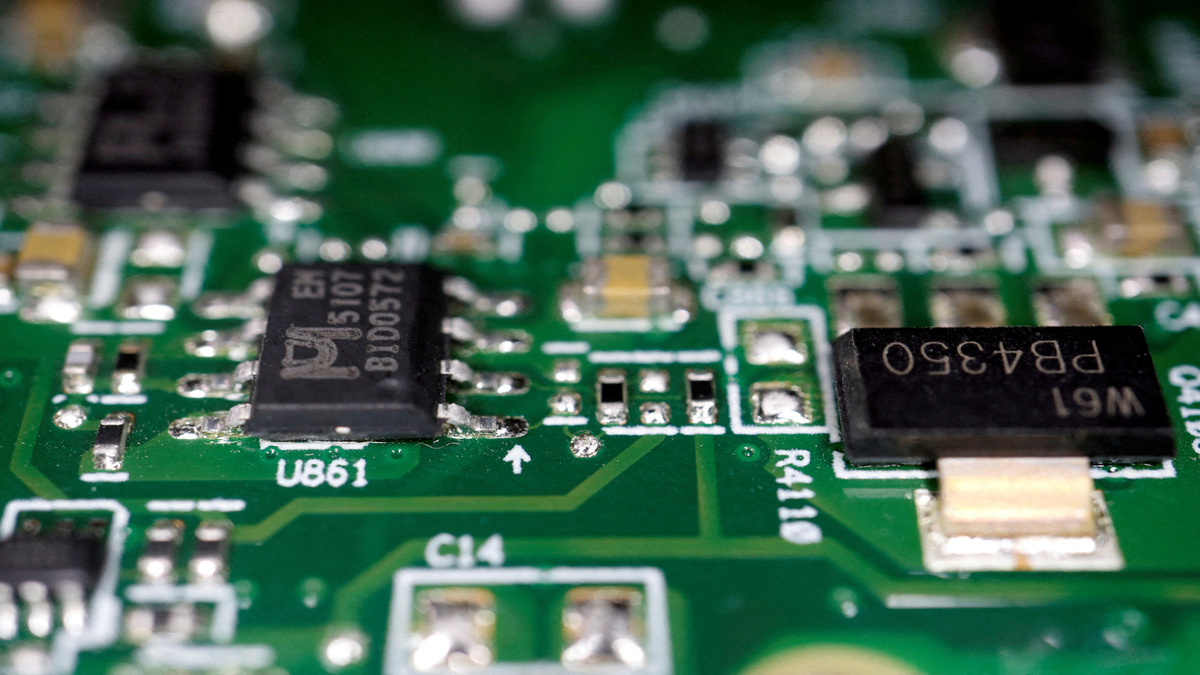To Russia With Love.
Apologies to James Bond fans for tweaking an Ian Fleming title, but that’s exactly what Prime Minister Narendra Modi’s Russia mission is during his three-day visit, which begins on Wednesday.
But is Russia a friend or a foe? It is as foolish as it is unfair to expect Modi to find an emphatic answer to that question during this tour.
That’s because there is no answer, despite the warmth shown by Modi in an article he wrote in Russian paper Rossiyskaya Gazetta and Russian president Vladimir Putin in his own article in The Times of India .
Modi wrote: “India-Russia relations … have withstood the test of time, and grown from strength to strength.”
Putin replied: “Our peoples have always had mutual sympathy and respect for each other’s spiritual values and culture.”
Though both Modi and Putin cited the example of many areas where India and Russia are cooperating, they both know that the entente cordiale between the two countries that once existed has, over the decades, drifted from a psychological and ideological zone into a purely commercial and utilitarian one.
Modi and Putin also know full well that Russia is, at the moment, neither a hostile enemy nor warm friend of India. They are just business partners, which isn’t a bad thing, even if it isn’t as good as their special camaraderie of the past.
Russia-China-Pakistan axis: A harsh reality
To ward off the US and NATO, Putin is too deeply entrenched in the Russia-China-Pakistan axis to take any serious note of India’s strategic concerns in the region. Although he is not averse to strike deals with Modi, especially if they are lucrative to the cash-starved Russian economy.
At the same time, Putin has his own ambitions: He has left nobody in doubt that he intends to restore to Russia the glory that the Soviet Union basked in before its 1991 break-up. This keeps the Russian adrenalin flowing and ensures Putin’s popularity at home.
And one of the world’s worst-kept secrets is that Chinese president Xi Jinping is day-dreaming of Pax Sinica. (Latin for Chinese peace, the phrase refers to a point in history some 1,000 to 1,500 years ago when unchallenged Chinese hegemony enforced peace in East Asia.) This keeps Chinese jingoism at a level that Xi desires to remain in power — he needs a report card for the Communist Party of China Congress in November — and nominate a head-nodding stooge in his place whenever he chooses to retire.
Why Modi’s Russia mission is tough
As western and Japanese analysts suspect, Putin is wary of Xi’s hegemonic designs, but has found himself in the latter’s company because it suits Russia’s own geopolitical and economic needs. For now.
There is no doubt that Xi (63), Putin (64) and Modi (66) are among the world’s most ambitious politicians. But Modi, with his aspirations confined to Indian borders, is the humblest of them.
Caught between Xi and Putin, Modi will find that To Russia with Love is a tricky and delicate mission, though at the end of it, he and Putin will make loud noises about “historic” ties and “ever-lasting” friendship.
A growing business is welcome, but nobody should be fooled by their honey-laced diplomatese. Here’s why:
After reaching a peak during the Cold War, India-Russia ties took a beating once the Soviet Union collapsed in 1991, though things became somewhat better later. But forget distant history: Even in the past couple of years, the India-Russia relationship has taken too many U-turns for Delhi’s comfort.
U-Turn 1: When relations reached some sort of stability despite Russia’s increasing proximity to China and Pakistan, Russia lifted arms embargo on Pakistan in 2014, signed a deal to supply four Mi-35 attack-cum-transport helicopters to Pakistan in 2015 and conducted a joint military exercise with it just days after the Uri attack.
U-Turn 2:
Russian envoys took great pains to explain that the helicopter deal with Pakistan amounted to a whole lot of nothing and that the military exercise was routine and planned long before Uri. Then in Goa, before the BRICS summit in October 2016, Putin and Modi had a bilateral meeting that clinched 16 deals. These included Russia supplying India $5 billion worth of S-400 Triumf surface-to-surface missiles and another $2 billion deal to help India make 200 Kamov 226T helicopters. Russia also agreed to consider leasing Akula-II nuclear-powered submarine to India for $2 billion.
U-Turn 3:
Even before the ink on the Goa deals fully dried up, Russia caused deep consternation and resentment in India by excluding it from a December 2016 exercise to bring peace between the Afghanistan government and the Taliban. Russia only involved China and Pakistan in the process, totally ignoring India’s own cordial ties with — and generous aid to — the Afghan regime.
U-Turn 4:
Let’s make up, said Russia in February 2017. The Russians invited India as well as Iran, which too has a significant stake in what goes on in Afghanistan, to the talks on the Taliban. Putin woke up to the fact that India could play a key role in Afghanistan’s peace-building process.
U-Turn 5:
All was well — until reports of Russia’s deepening involvement in the China Pakistan Economic Corridor (CPEC), which is part of China’s One Belt One Road (OBOR) venture — began to trickle in.
U-Turn 6:
Wait for it. This will unfold at the end of Modi’s visit to Russia on 2 June. No doubt, the two countries will sign deals, deals and more deals, which will give a welcome boost to the trade between them.
Compare this confusion with what happened in the glory days of India-Russia ties in 1960s and 1970s. The Soviet Union helped India develop its science and industry, supplied India with an entire gamut of military hardware, backed India on virtually every issue on the global stage and became India’s largest trading partner.
Though India-Russia friendship soured somewhat in 1950s, when the USSR became closer to China, things looked up significantly after the two communist giants fell out in 1961 on account of their conflicting interpretations of Marxism and differing national interests.
It’s likely that, at some point in future, Putin may find Xi to be an undependable ally in political and strategic terms, though their business relations will grow. Will there will be a repeat of 1961 and a second China-Russia split? Mark another major U-turn in India-Russia relations if that happens.
But, for now, it makes sense for India to keep its commercial relationship with Russia going. Which makes sense for Putin too, as he sits down for talks with Modi.
)
)
)
)
)